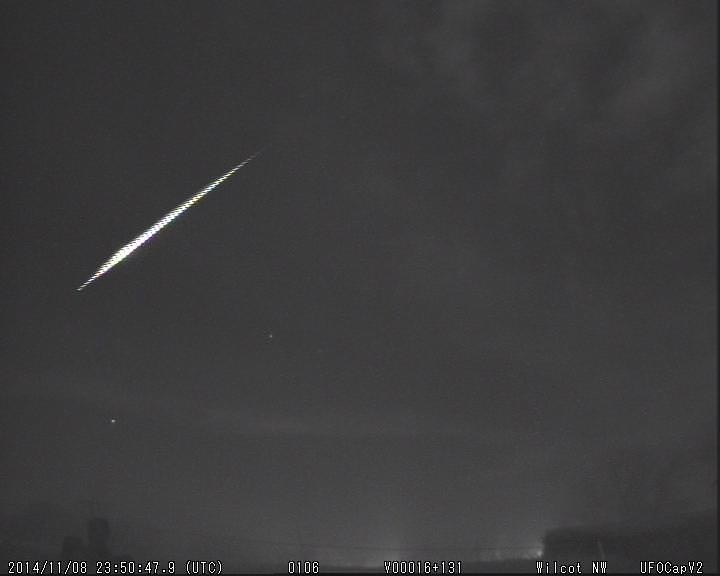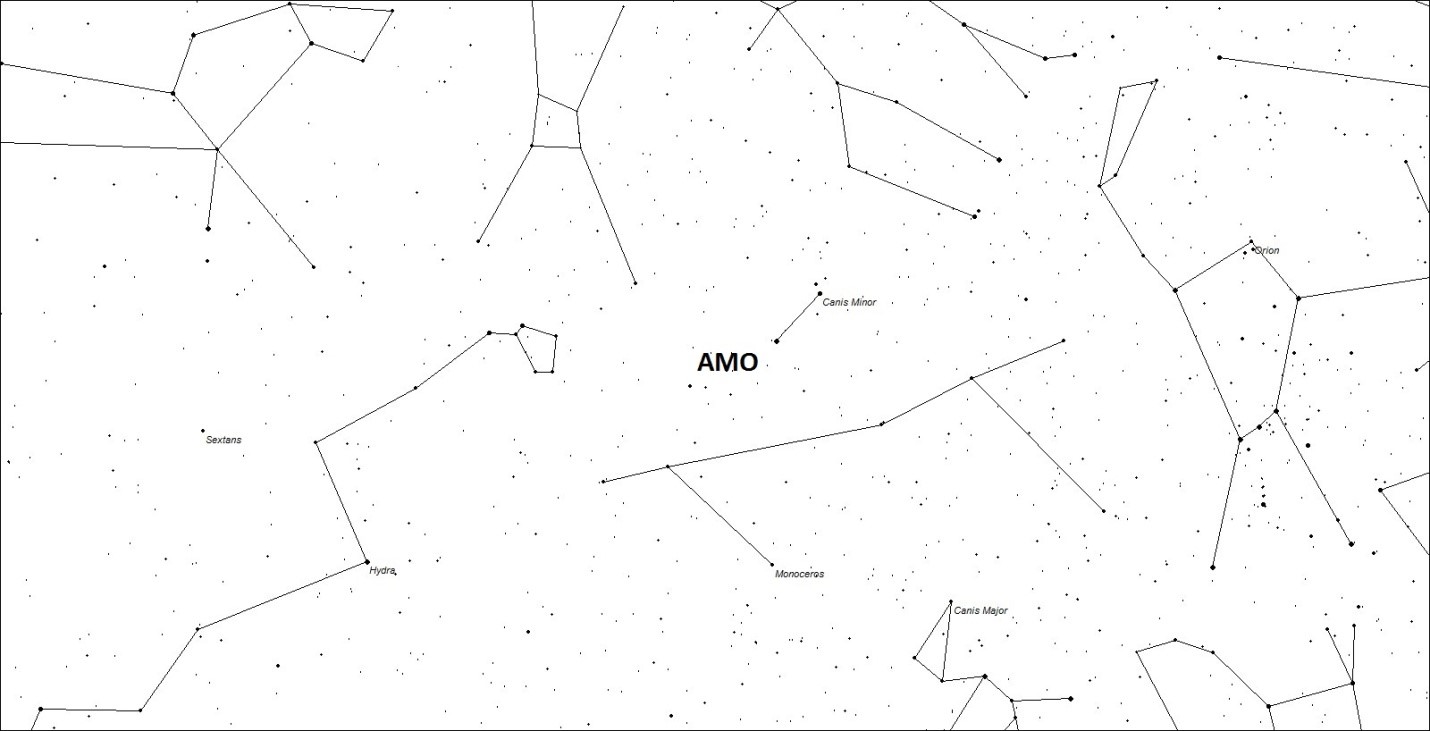Shortly after the Earth has encountered the core of the Leonid meteor shower in mid-November, we encounter another stream, much less known, but capable of surprise activity. The alpha-Monocerotids are produced by an unknown object, most likely a long period comet. We encounter debris from this object each November 15th through the 25th. Maximum activity occurs on November 21st from a radiant located at 117° +01°. This area of the sky actually lies in southeastern Canis Minor, a few degrees southeast of the brilliant +0 magnitude star known as Procyon (alpha Canis Minoris). Activity is very low away from maximum with rates less than 1 shower member per hour. Activity may reach 1 per hour between November 20-22, with a sharp peak on the 21st. On at least 4 occasions during the 20th century, there have been outbursts of activity from this shower. The last outburst occurred in 1995, when maximum rates reached 450 meteors per hour for a short time. These outbursts were approximately 30 minutes in length, short but intense!

No outburst of this magnitude is expected this year but unexpected activity was detected last year despite the presence of a bright Moon. Therefore there is the possibility that some activity from this source could also appear this year, especially since the waxing crescent Moon will have set by the time the radiant reaches a decent elevation above the horizon. If any activity is to appear in 2017, it would most likely occur near 21:26 Universal Time on November 21st. This timing favors Eastern Europe and most of Asia. Rates of near 5 per hour are possible, which is better than what is seen in most years.
The radiant for this display rises during the late evening hours and does not reach 30 degrees altitude until shortly after midnight. From midnight to dawn are the prime hours to view these meteors. Of course if the maximum occurs before midnight in your area, you will want to watch then. I would suggest facing the eastern half of the sky if the radiant is low and then shifting toward the south as the radiant gains altitude. Each observing session should be at least an hour long to achieve a good scope of the activity. I would avoid taking breaks as you never know what you could miss with this display!
Why is this shower called the alpha-Monocerotids if the radiant lies in Canis Minor? The early outbursts were unexpected and observers did their best to estimate the radiant using visual means and plots. Through 1985, it was thought that the radiant was located a bit further south in Eastern Monoceros. Video recordings of the 1995 outburst provided a more exact area of the outburst which indicated the radiant actually lies just north of the Monoceros/Canis Minor border. These meteors have been known as the alpha-Monocerotids for many years and to change the name now would only cause confusion. After all, the border of Monoceros only lies 1 degree away.

So if you skies are clear on the night of November 21/22, I encourage you to make an effort and check out this possible display. The International Meteor Organization welcomes your observations, both positive and negative results are important in refining this stream!




 You saw something bright and fast? Like a huge shooting star? Report it: it may be a fireball.
You saw something bright and fast? Like a huge shooting star? Report it: it may be a fireball.  You counted meteors last night? Share your results with us!
You counted meteors last night? Share your results with us!  You took a photo of a meteor or fireball? You have a screenshot of your cam? Share it with us!
You took a photo of a meteor or fireball? You have a screenshot of your cam? Share it with us!  You caught a meteor or fireball on video? Share your video with us!
You caught a meteor or fireball on video? Share your video with us!